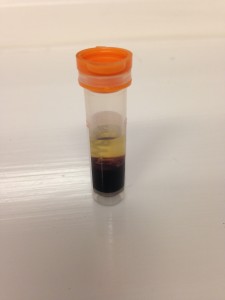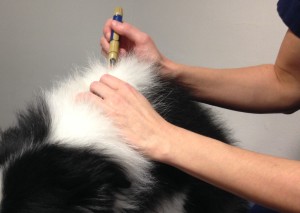Here at Hollybank Veterinary centre we would like to help increase our client’s awareness on Diabetes.
What is Diabetes?
Diabetes is a lack of glucose due to reduced insulin levels OR insulin resistance. The official term used to describe this is Diabetes Mellitus. Glucose is used as an energy source within cells. However, Insulin is required to help transport Glucose into these cells. Without insulin the glucose stays in the animal’s blood stream or excess is excreted in their urine. Insulin is produced by specialised cells in the pancreas.
How does it occur?
Diabetes can affect both cats and dogs. The underlying reason to how the diabetes has occurred however is different in each species.
 Cats often get insulin resistance. This is due to another primary issue such as; endocrine disorders such as hyperthyroidism, pancreatitis, obesity, a persistently high fat diet, any significant illness or injury causing stress. Long standing insulin resistance can eventually lead to destruction of the insulin cells.
Cats often get insulin resistance. This is due to another primary issue such as; endocrine disorders such as hyperthyroidism, pancreatitis, obesity, a persistently high fat diet, any significant illness or injury causing stress. Long standing insulin resistance can eventually lead to destruction of the insulin cells.

Dogs on the other hand often have destruction of the insulin cells. This can be due to their own body’s immune destruction, pancreatitis or infectious agents.
What signs occur with diabetes mellitus?
- Weight loss despite an increased or ravenous appetite
- Drinking and urinating excessively
- Decreased activity or depression
- Inappetance
- Reduced body mass and muscle wasting
- Thinning, dry and dull hair
- Diarrhoea
- Vomiting
- Dehydration
- Cataracts (more commonly in dogs)
How do we investigate?
 Firstly, we would recommend an appointment for your pet to be fully examined.If we are suspicious of Diabetes Mellitus we will recommend for their blood and urine to be tested.
Firstly, we would recommend an appointment for your pet to be fully examined.If we are suspicious of Diabetes Mellitus we will recommend for their blood and urine to be tested.
A diabetic animal will have high levels of glucose in their blood stream as it is not being taken up by cells. The bloods may also help investigate any underlying or concurrent illnesses that need addressing. The urine may also have high levels of glucose as excess in the blood is removed via the urine. Urine full of glucose is perfect for the growth of bacteria so the urine test will also check for urinary tract infections.
A further test that may be required is the measurement of Fructosamine. This is a form of glucose bound in the blood to protein. It is a good indicator of persistently high levels of glucose and is often used to confirm diabetes mellitus in cats.
How can we manage Diabetes Mellitus?
 In cases where diabetes mellitus has been caused by resistance, if we are able to correct or treat the illness causing the resistance then the diabetes may be reversible. If the Diabetes mellitus has been caused by destruction of cells then this is irreversible.
In cases where diabetes mellitus has been caused by resistance, if we are able to correct or treat the illness causing the resistance then the diabetes may be reversible. If the Diabetes mellitus has been caused by destruction of cells then this is irreversible.
In the vast majority of incidences your pet will require insulin replacement and the Diabetes Mellitus will be a lifelong condition.

Insulin is given via two daily injections. We will teach you how to give the injections and practice with you until you feel comfortable in doing so. The insulin needles are usually well tolerated. Your animal will also need a constant feeding and exercise regime. Long term monitoring of glucose levels and your animal’s progress is also part of their management plan.
If you are concerned your pet is showing signs of diabetes mellitus then please book an appointment by calling 01606 880 890.
During ‘Pet Diabetes Month’ we will be providing free urine testing sticks to measure the amount of glucose in your animals urine. Please collect one of these at reception.






